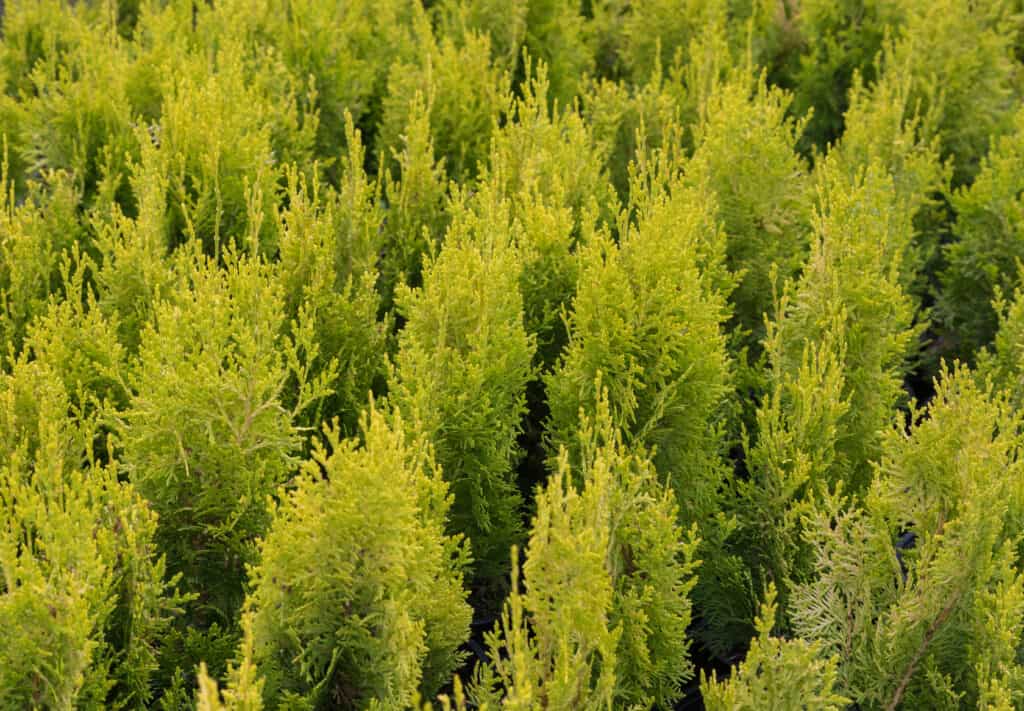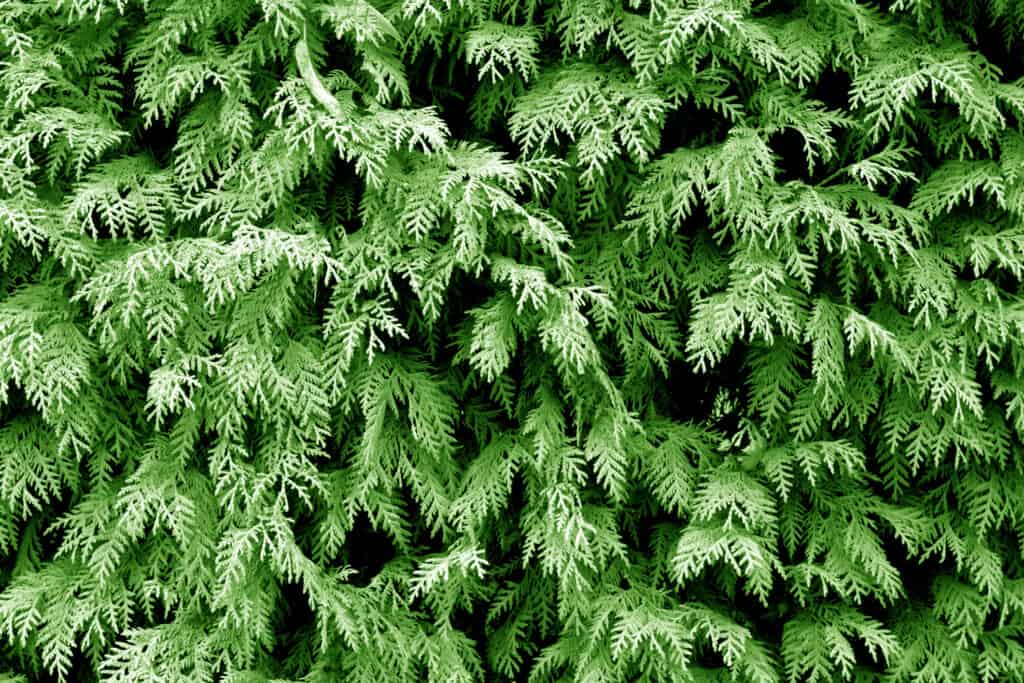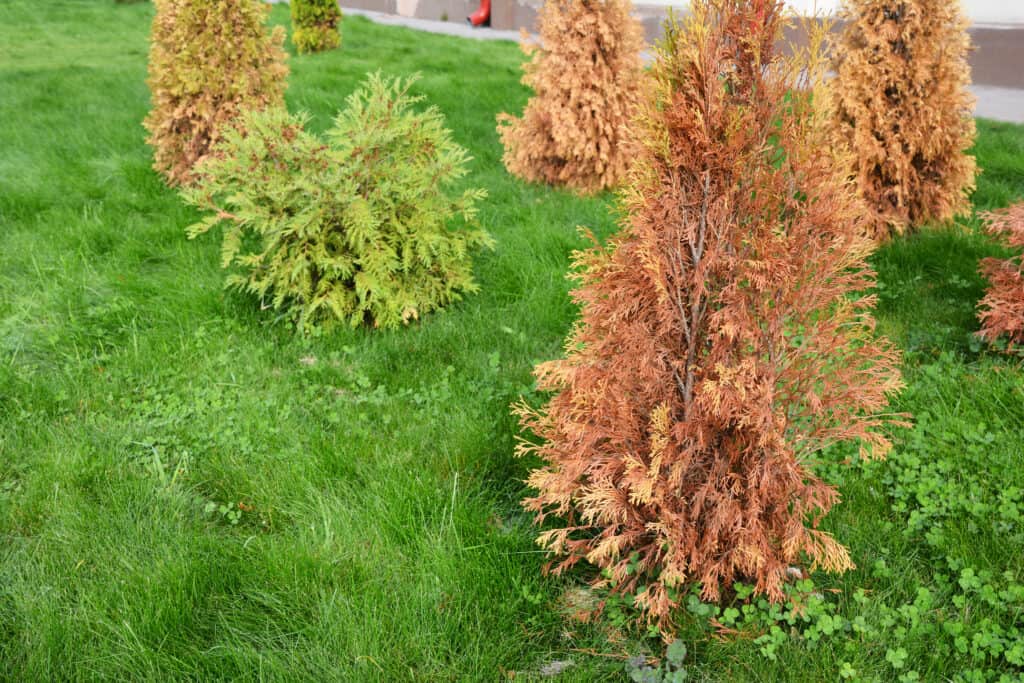When it comes to planting arborvitae trees, timing is everything. These evergreen beauties add a touch of elegance and privacy to your landscape, but choosing the right moment to put them in the ground can make all the difference. In this article, we’ll dive into the nitty-gritty of when and how to plant arborvitae trees.
What are Arborvitae Trees?
Arborvitae trees, scientifically known as Thuja, are a group of evergreen coniferous trees and shrubs that belong to the Cupressaceae family. These remarkable trees are widely recognized for their distinctive appearance, moderate size, and versatility in landscaping.
Classification
Arborvitae trees are part of the Thuja genus, which encompasses several species. The most commonly cultivated species for landscaping purposes include Thuja occidentalis (Eastern Arborvitae) and Thuja plicata (Western Arborvitae). These species are further subdivided into various cultivars, each with its unique characteristics, such as size, color, and growth pattern.
Size
Arborvitae trees are known for their moderate size, which makes them a perfect fit for both suburban and urban environments. Depending on the species and cultivar, they can grow to a height of 10 to 60 feet. Eastern Arborvitae tend to be more compact, while Western Arborvitae can grow larger and faster. These size variations allow homeowners and landscapers to select the right arborvitae for their specific needs.
Appearance
Arborvitae trees possess a distinctive appearance that sets them apart from other conifers. Their foliage is made up of scale-like, flattened leaves that overlap along the branches in a fan-like or spiral arrangement. These leaves can range in hue from a bright green to blue-green or golden-yellow depending on the cultivar. Arborvitae trees keep their leaves all year long, adding a touch of greenery even in the dead of winter.
The bark of arborvitae trees is fibrous and reddish-brown, further enhancing their aesthetic appeal. As they mature, these trees develop a conical or pyramidal shape, with branches that gracefully droop downward. This growth pattern lends itself well to formal hedges, privacy screens, and topiary designs.
Native Habitat
Arborvitae trees are native to North America, with various species and cultivars found in different regions. Thuja occidentalis, the Eastern Arborvitae, is native to eastern Canada and the northeastern United States, thriving in cold climates and moist, well-drained soils. On the other hand, Thuja plicata, the Western Arborvitae, is native to the western United States and Canada, particularly in the Pacific Northwest. It prefers milder coastal climates and can tolerate a wider range of soil conditions.
In their native habitats, arborvitae trees play crucial ecological roles. They provide shelter and food for various wildlife species, including birds and mammals. Additionally, their dense foliage helps stabilize soil and prevent erosion in forested areas.

Arborvitae trees can grow up to 60 feet tall.
©Deyana Stefanova Robova/Shutterstock.com
When to Plant Arborvitae Trees
The optimal planting time for these trees varies across different hardiness zones, as local climate conditions play a significant role in determining when these evergreen beauties should be introduced to the soil. Arborvitae trees can be planted at different times in Zones 3 through 11.
Understanding Hardiness Zones
Before delving into the specifics of planting arborvitae trees, it’s essential to understand the concept of hardiness zones. The United States Department of Agriculture (USDA) has divided North America into distinct hardiness zones based on average minimum winter temperatures. These zones range from Zone 1 to Zone 11, with each zone representing a 10-degree Fahrenheit temperature difference.
Planting Arborvitae in Zone 3-4
The ideal time to grow arborvitae trees in Zones 3 and 4, which encompass regions with severe winters and low temperatures, is in the early spring or late summer. While planting in the late summer offers trees a head start before the winter’s frost, planting in the spring enables them to build their root systems before the sweltering heat of July. To reduce heat stress, it is vital to avoid planting during the sweltering midsummer months.
Planting Arborvitae in Zone 5-6
In Zones 5 and 6, which experience milder winters than Zones 3 and 4 but still have cold temperatures, the ideal time to plant arborvitae trees is in the spring or early fall. Spring planting provides ample time for root development before summer, while early fall planting allows the trees to establish themselves before the first frost. Avoid late fall planting, as it may not give the trees sufficient time to establish roots before winter.
Planting Arborvitae in Zone 7-8
In Zones 7 and 8, where winters are relatively mild, arborvitae trees can be planted in either the spring or the fall. The moderate climate in these zones provides a more extended planting window. However, it’s still advisable to avoid planting during the peak of summer to prevent heat stress on the newly planted trees.
Planting Arborvitae in Zone 9-11
In Zones 9 to 11, which enjoy mild to warm winters, arborvitae trees can be planted throughout the year. These zones have the advantage of a more forgiving climate, allowing for flexibility in planting times. While late spring or early fall are still recommended to avoid extreme temperatures, gardeners in these zones can experiment with planting arborvitae trees at various times based on local conditions.

Arborvitae trees can grow in hardiness zones 3 through 11.
©iStock.com/pavelalexeev
How to Plant Arborvitae Trees
Planting arborvitae trees is a gratifying endeavor that can enhance your landscape’s beauty and provide year-round greenery. Properly starting the planting process is crucial for ensuring the tree’s healthy growth and longevity.
Selecting the Perfect Location
Selecting an appropriate location is the foundational step for successful arborvitae planting. Begin by choosing a location that receives adequate sunlight. Arborvitae trees thrive in full to partial sunlight, typically requiring at least six to eight hours of bright, direct sunlight every day. Not enough sunlight can lead to poor growth and foliage density.
Assess the soil quality in the chosen area. Arborvitae trees prefer well-draining soil that is slightly acidic to neutral. Avoid planting in areas with clayey or waterlogged soil, as these conditions can hinder root development and lead to disease.
Also, you should determine the appropriate spacing between arborvitae trees based on the specific species and cultivar you’ve chosen. Adequate spacing ensures that each tree has enough room to grow without overcrowding, which can lead to poor air circulation and potential health issues.
Digging the Planting Hole
Once you’ve chosen the perfect location, it’s time to prepare the planting hole. Dig a hole that is as deep as the root ball and two to three times wider. This spacious hole provides ample room for the tree’s roots to spread out and establish themselves.
Loosen the soil in the planting hole, breaking up any compacted layers. Mixing in organic matter like compost improves soil fertility and enhances drainage. This helps create a favorable environment for root growth.
Planting the Arborvitae
With the hole ready, it’s time to plant your arborvitae tree. Gently remove the arborvitae tree from its container, taking care not to damage the root ball or disturb the roots. If the tree is root-bound, you may need to gently pull apart any knotting roots to encourage outward growth.
Place the tree in the center of the hole to make sure that it sits at the same level as it did in the container. The top of the root ball should be flush with or slightly above the surrounding soil level. Avoid planting too deep, as this can suffocate the tree’s roots.
Backfilling and Watering In
After positioning the tree, it’s time to complete the planting process. Fill the hole with the soil mixture you prepared earlier. As you fill the hole, tamp the soil down gently to eliminate air pockets. Properly settling the soil around the roots ensures good root-to-soil contact.
Water the freshly planted arborvitae tree well to help settle the soil further and ensure the root ball is evenly moist. Adequate moisture is critical during the initial planting phase, as it promotes root establishment.
Mulching for Insulation
Mulch serves as insulation, regulating soil temperature and moisture levels. It also helps suppress weed growth, reducing competition for nutrients and water.
Apply a two to three-inch layer of organic mulch, such as wood chips or shredded bark, around the bottom of the tree. Spread the mulch evenly in a circle, but avoid piling it against the trunk, as this can lead to rot and disease.
Finishing Touches
With your arborvitae tree properly planted, there are a few finishing touches to consider. In windy areas or with particularly top-heavy trees, staking may be necessary to provide temporary support until the roots are established. Use soft ties to secure the tree without causing damage.
Also, try to maintain a consistent watering routine during the first growing season. Deep, infrequent watering is generally preferable to shallow, frequent watering.
Different Types of Arborvitae Trees
Arborvitae trees encompass a range of species and cultivars, each with unique characteristics and adaptations to specific climates. Understanding the diversity of arborvitae varieties and their compatibility with different hardiness zones is essential for successful landscaping.
Eastern Arborvitae (Thuja occidentalis)
Eastern arborvitae, also known as American arborvitae or white cedar, is a popular choice for its versatility and classic appearance. It features flat, scale-like leaves arranged in overlapping sprays and produces small, brown cones.
Eastern arborvitae is well-suited for hardiness zones 3 to 7. This species excels in regions with cold winters and tolerates a wide range of soil conditions, from moist to slightly dry.
Emerald Green Arborvitae (Thuja occidentalis ‘Smaragd’)
Emerald Green is a popular cultivar of Eastern arborvitae, appreciated for its vibrant, bright green foliage and slender, compact growth habit. It forms an attractive columnar shape, making it an excellent choice for hedges and screens.
Emerald Green arborvitae is ideal for hardiness zones 2 to 7. Its exceptional hardiness and resistance to winter conditions make it a suitable choice for colder climates.
American Arborvitae (Thuja occidentalis ‘American Pillar’)
American Arborvitae, known as ‘American Pillar,’ is a cultivar valued for its narrow, upright growth habit. Its foliage is deep green and maintains a neat appearance without the need for extensive pruning.
‘American Pillar’ thrives in hardiness zones 3 to 7, making it well-suited for regions with cold winters. Its vertical shape allows for space-efficient planting in various landscapes.
Western Arborvitae (Thuja plicata)
Western arborvitae, also referred to as Western red cedar, is native to the Pacific Northwest. It is characterized by its aromatic, reddish-brown bark and feathery, fern-like foliage. This species is larger and more adaptable than its Eastern counterpart.
Western arborvitae is best suited for hardiness zones 5 to 7, where it can flourish in mild coastal climates. It prefers well-drained soils and thrives in areas with moderate humidity.
Green Giant Arborvitae (Thuja standishii x plicata ‘Green Giant’)
Green Giant is a hybrid arborvitae known for its rapid growth and impressive size. It boasts lush green foliage and can reach heights of up to 50 feet or more, making it an excellent choice for creating tall privacy screens.
Green Giant arborvitae thrives in hardiness zones 5 to 8. Its adaptability to various soil types and its resistance to pests and diseases contribute to its popularity.
Techny Arborvitae (Thuja occidentalis ‘Techny’)
Techny arborvitae is a cultivar of Eastern arborvitae appreciated for its dense, globe-shaped growth. Its dark green foliage and compact form make it a suitable choice for foundation plantings and ornamental use.
Techny arborvitae performs well in hardiness zones 3 to 7, with a preference for colder climates. It requires well-drained soil and can tolerate occasional dry spells.
DeGroot’s Spire Arborvitae (Thuja occidentalis ‘Degroot’s Spire’)
DeGroot’s Spire is a narrow, columnar cultivar of Eastern arborvitae. Its compact size and slender shape make it an excellent choice for small gardens or as a vertical accent in larger landscapes.
DeGroot’s Spire arborvitae is well-suited for hardiness zones 2 to 7, excelling in regions with cold winters and adapting to various soil conditions.

Arborvitae trees require regular care and maintenance, especially when young, to avoid browning, disease, and death.
©iStock.com/Lex20
Care Tips for Arborvitae Trees
Proper care ensures the health and vibrant appearance of arborvitae trees.
Watering
Arborvitae trees need consistent moisture, especially during their first year. Water deeply to keep the soil consistently damp but not waterlogged. During hot, dry spells, increase watering frequency. Ensure proper drainage to prevent waterlogged roots, which can lead to root rot and other diseases. Always check the soil’s moisture level before watering.
Pruning
Avoid heavy pruning in the first year after planting to allow the tree to establish its roots. Lightly trim dead or damaged branches as needed. Prune to maintain the desired shape and size of the arborvitae, typically in the late winter or early spring. Remove any overcrowded or weak branches.
Protection from Harsh Conditions
In colder regions, consider wrapping young arborvitae trees with burlap or using anti-desiccant sprays to protect them from winter winds and frost. Planting other windbreak trees or shrubs nearby can shield arborvitae from strong winds, preventing damage to their foliage.
Pest and Disease Management
Regularly inspect your arborvitae for signs of pests or diseases, such as discolored foliage or unusual growths. Early detection allows for timely intervention. Address pest infestations or diseases promptly. Options include pruning affected areas, using appropriate insecticides or fungicides, or consulting a professional arborist.
Fertilization
Arborvitae trees generally require minimal fertilization. If necessary, apply a balanced, slow-release fertilizer in the spring to promote healthy growth. Avoid over-fertilizing, which can lead to excessive growth and make the tree more susceptible to pests and diseases.
Monitoring
Keep an eye on your arborvitae throughout the year. Watch for any signs of stress, discoloration, or unusual growth. Timely attention to these signs can prevent more significant problems. Periodically test the soil’s pH and nutrient levels to ensure it meets the tree’s requirements. You can make adjustments as the need arises.
The photo featured at the top of this post is © HudsonValleyNY/Shutterstock.com
Thank you for reading! Have some feedback for us? Contact the AZ Animals editorial team.







